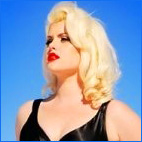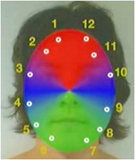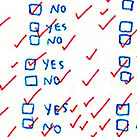 |
Museums of the mind 'Thoughts come in sets, like waves' The mind is the glue that holds our worlds together, how good we know the way to these enigmatic inner places, we go there when we have memories to keep alive. These rooms within us are complex, rich, rewarding, meaningful layers of memory we will always return to. Between birth and dead we collect intuitions of a gaze, we store forgotten dreams, waiting to be re-dreamed. The mind is the pilot who navigates us trough our mental universe, to visit the déja vu places and to give us reasons to dream. Enter > The museums of the mind |
|||
 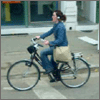 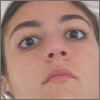   |
Body Language Sequences 'What human beings tell with their bodies' / 100 Ultra-short films In the Body Language Sequences I walk through the streets of Antwerp City, to work out a psychogeographical experiment. I want to investigate how people differ from each other, how people are using 'silent language' and 'personal space'. I am interested in the temporality of speed, acceleration, slowness and pause. How 'sub-movements' are expressed. How motion precedes emotion. Up to 90% of all of our communication is nonverbal. The direct actions of the human nervous system are usually subconscious, instinctively meaningful and more honest than verbal communication. Bodies do not lie. The 'subliminal' messages of the body are playing a major role in how we relate to others and how they see us. Our bodies are the most public signals of our identities, and private reminders of who we are. We imagine by remembering, or vice versa. In the ritual quality of interpersonal actions there is a hidden code of behavioural patterns, through which hierarchical and social power structures emerge. The body language sequences of the human figure in motion, are a display of our motivation in the flow of time. In general the Body Language Sequences are an exploration about human behaviour. More specific, they are a cinematic study of visualising and discovering time patterns of interpersonal behaviour. The revealed moments are giving an insight in the instinctive feelings, attitudes, expressions, gestures and emotions of human communication. In a series of experimental ultra-short films, each looped sequence draws attention to its own syntax —a rhythmic pattern of body language in motion. These visible acts of meaning are a search into what people tell with their bodies. During the montage I saw the world differently. I became aware that I was also documenting the diversity of changes in life style as an emerging element in society. The re-entered world became transposed, intensified, electrified. It was my intention to study the human character by exploring the micro-motions of human acts, extracted from the flux of life, and to convey a message which brings an articulation of visual thinking into play. Enter > (1) (2) (3) (4) (5) Shot on location in the city of Antwerp, Belgium. |
|||
 |
Digitalsouls.com review 'Dr. Hugo Heyrman / Body Language Sequences' by Holger H-Ray Heine on Saturday, February 18, 2006, San Francisco. Blogspot.com review 'Dr. Hugo's Body Language Sequences' by Brad Blinky on Tuesday, October 11, 2005. Net Art Review 'doctorhugo.org' by Eduardo Navas onThursday, March 13, 2003 |
|||
 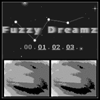  |
Fuzzy Dreamz 'A cinematic journey into the psychogeography of dreams, from fear to fun, drama, love, desire and a sense of wonder.' The 90 short QT movies are forming a provocative linking of dreams, nightmares, privateness and fuzzy logic. A net art classic from 1996. In Fuzzy Dreamz we cross the borders of time and space. Time and timing is the medium of life. The navigator creates his personal dream scenario by choosing a star. Travel from star to star, into inner space and explore the world of time within time. Enter the dimension of condensed and extended time, with a rhythmic flow of images, loops, flashbacks, fragments of sounds and voice-overs. A kaleidoscopic split screen gives the optical unconscious a free-floating quality. These non-linear sequences are simulating the memory processes of the dreaming brain. I use the cinematic syntax of montage to create new connections between synaesthetic dream experiences and our collective memory. Discover why a myth is a public dream, and a dream is a private myth. Fuzzy Dreamz brings us closer to 'who we are', 'what we want' and 'what we see with closed eyes'. The future never sleeps. . . Enter > (00) (01) (02) (03) (04) (05) (06) (07) (08) |
|||
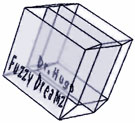 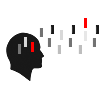  
|
Fuzzy Dreamz at MAXXI |
|||
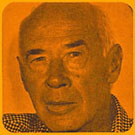 |
Henry Miller Online |
|||
Brain & Mind maps Sigmund Freud an archaeology of the mind & the sphinx Brain Zone #1 The two brain hemispheres are responsible for distinctly separate functions. Broadly speaking, the left as being the logical part of the brain, and the right as the imaginative and intuitive part. At birth we have a raw but integrated (whole) brain to a level where synaesthesia is common. Brain Zones #2 Following the principle of inverse symmetry, each cerebral hemisphere controls the opposite side of the body: the right hemisphere controls the left side of the body; the left hemisphere, the right. Left Brain - Right Brain Conflict This is a test! Left Brain vs Right Brain This is a test! Stages of objectivity and subjectivity Brainwaves Beta ~ Alpha ~ Theta ~ Delta First Time earing sounds for the first time Eyes' Movements This newspaper has already been read The Wisdom of the Heart from the 14th Dalai Lama Seven Blunders of the World by Mahatma Gandhi Memory Why do we forget things? |
||||
 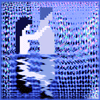  |
Early net.art L'Origine du Monde / The Origin of the World, a 'Virtual Art installation' (1996). An interactive upgrade of the famous painting by Gustave Courbet,at ONLINE-media,Cinema Capitole, Ghent, Belgium. Dancing - Piccaso - Drawings Short digital film in QT format, based on drawings by Pablo Picasso (brush and India ink on paper, Paris 1901). Flamenco has roots in Andalusia and Pablo Picasso was born there (Málaga, Spain). Presented at HOMMAGES / OUTRAGES. PICASSO, au Mamac, Musée d'Art moderne et d'Art contemporain, Liège, in cooperation with Flux News, 2001. The Skin of Time, I am the clothing of time, an extension of the skin, the adventure of entropy. Interactive Dreams Early electronic poetry (1995) for Netscape 1.1 & 2.0 animated. Online presented by Rudy De Waele at ISDM (Interactive Study and Documentation on Multimedia) an interactive center for cultural and artistic projects, Brussels. Digital Art Database A space for digital art. The first virtual gallery of digital art in Belgium, a piece of cyberarcheology from 1995 (unfinished project). 10 sec. Streetlife The last 10 sec. in a lifetime. Presented in 1988 at the First International Symposium on Electronic Art, (FISEA) in Utrecht, the Netherlands. Selected for competition on Computer Graphics and Image Processing. |
|||
  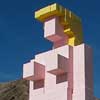  |
Museums of the mind Lady Desert: The Venus of Nevada, 1992, an ongoing net.art project by Dr. Hugo Heyrman. Culture meets nature. Iconology of a 3D-Artwork —a multitude of ways of seeing. Each viewpoint is part of an infinity of facets, a shared form of Cubism in time and space. Inspired by the idea of a tribute to all woman, the artist wanted to represent the embodiment of a nude woman as an icon. A symbol of female beauty and body, the power of her sexuality and her life-giving potential. This, surrounded by the magic of mountains and desert silence. |
|||
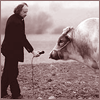  |
Early net.art La Biennale di Venezia - Future/Present/Past Dr. Hugo & Charles François, 'From Lascaux to CyberBull' a project, with the presence of a 'real bull' in Venice, a BBB, Blanc Blue Belge (living genetic sculpture). Circuit 'Off', organized by Lino Polegato, Club Media Belgium, Thomas Büsch, Club Media Berlin and the Teatro Fondamenta Nuove, Venice. Enter > The CyberBull Drawings post-ego project, at the 47th Biennale of Venice, Dr. Hugo asked 15 artists to make a drawing of the 'CyberBull'. From the cave-paintings of Lascaux to the 'CyberBull' now. The potential symbolic power of the image of the bull is clearly in close connection with the origins of art history. Enjoy the artists (out of Plato's cave) vision online. Enter > Visit the CyberBull a 'living genetic sculpture' at his home. |
|||
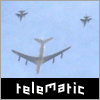  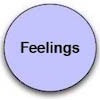 |
Layers of Reality: Art & Synesthesia |
|||

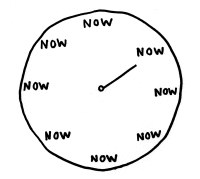 |
Archive Biography / Biografie The paintings, a chronology Personal exhibitions Selected group exhibitions & online art projects Mobile Museum of Modern Media Artworker Foundation Artworker Star Happenings in Belgium Happening News & Milkyways Collections Selected Bibliography Wikipedia Entry  Welcome to my social network |
|||

